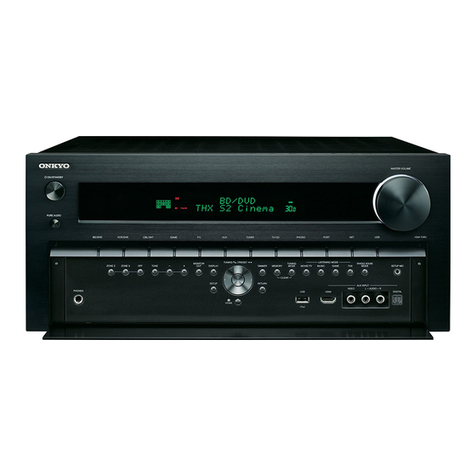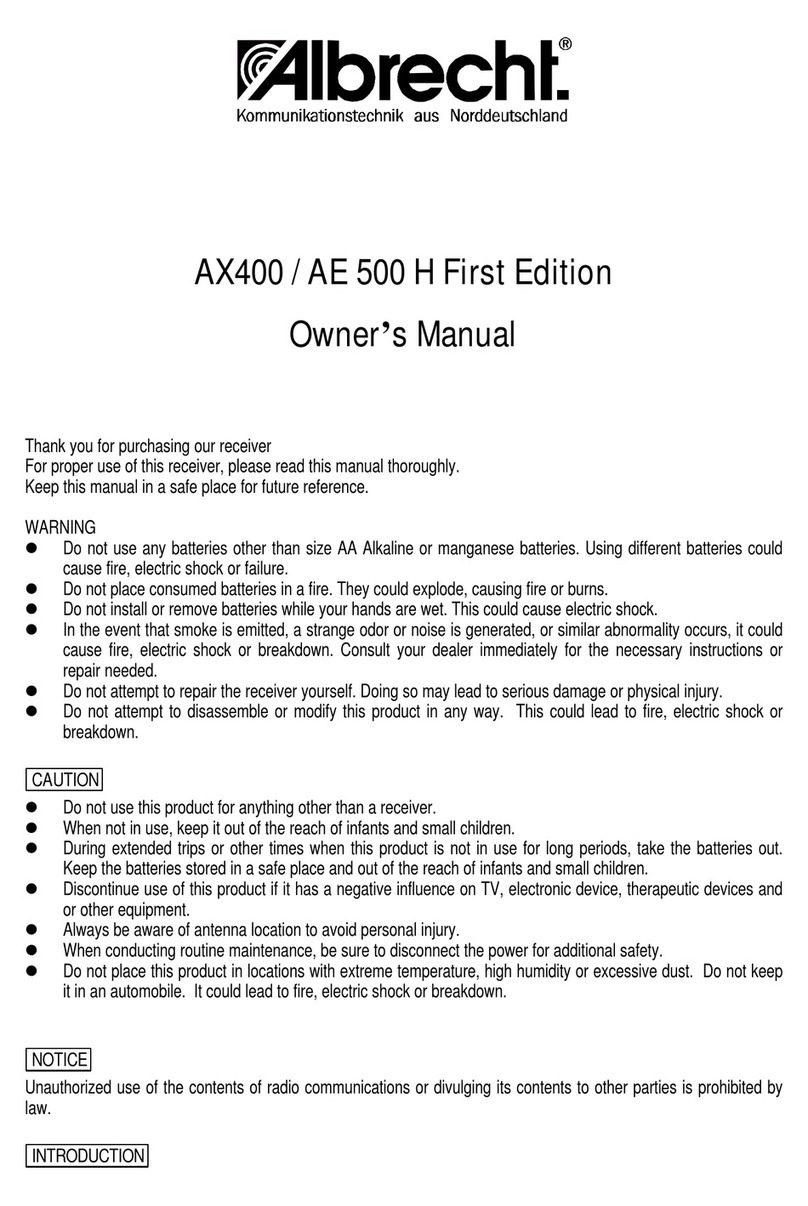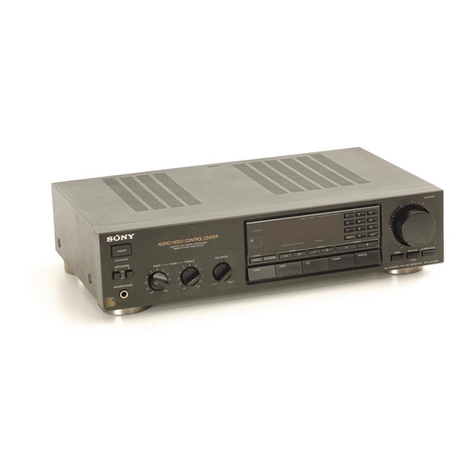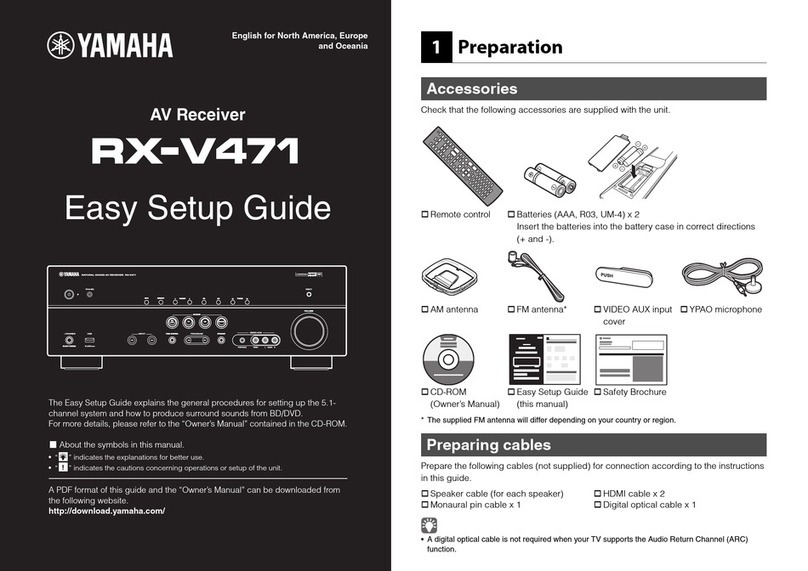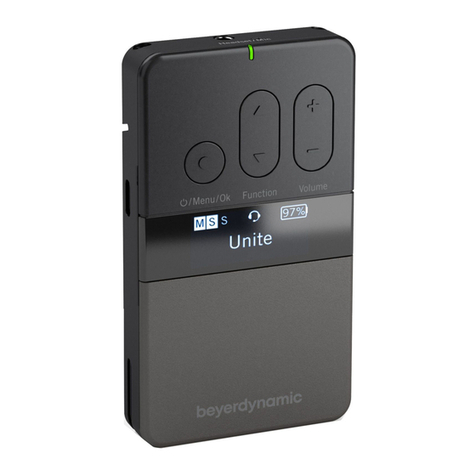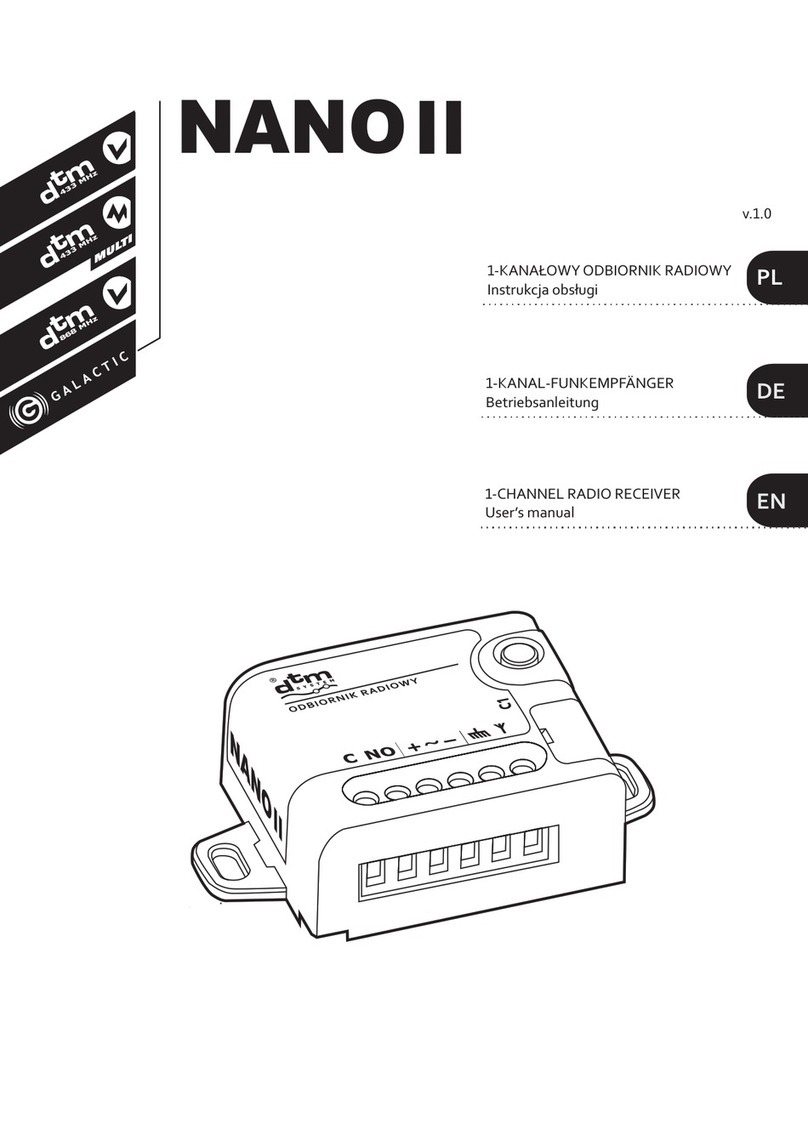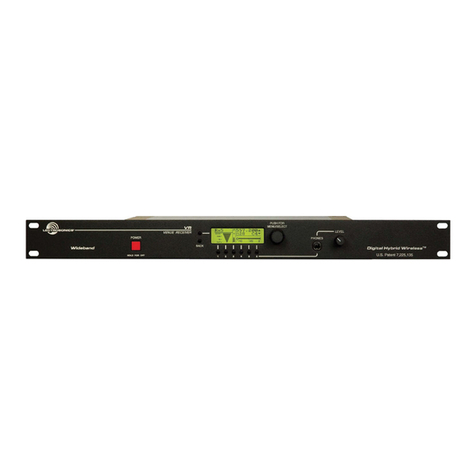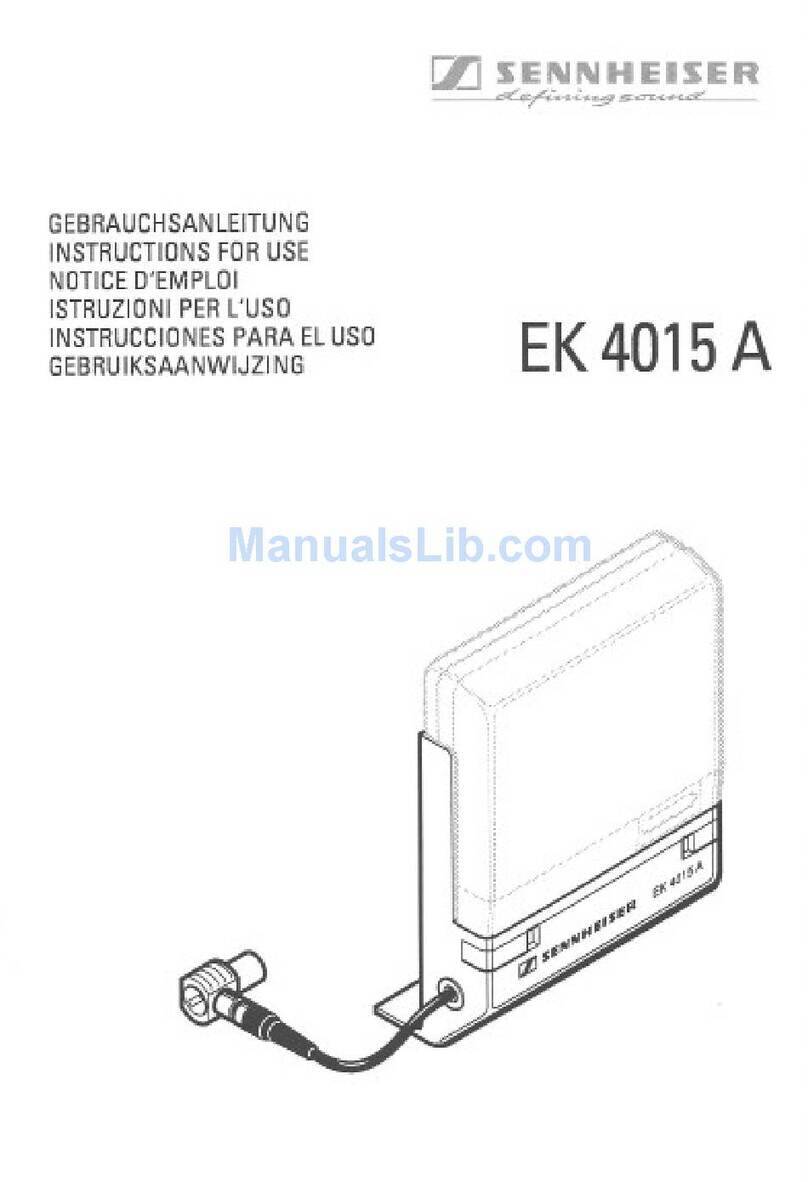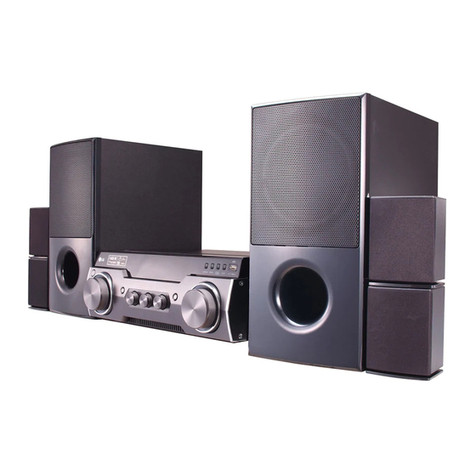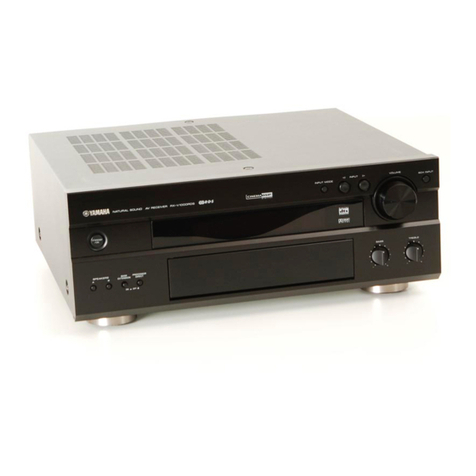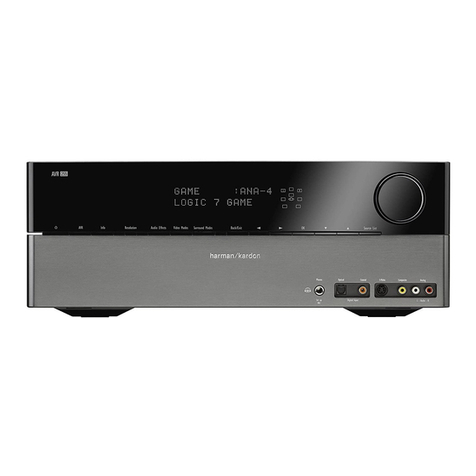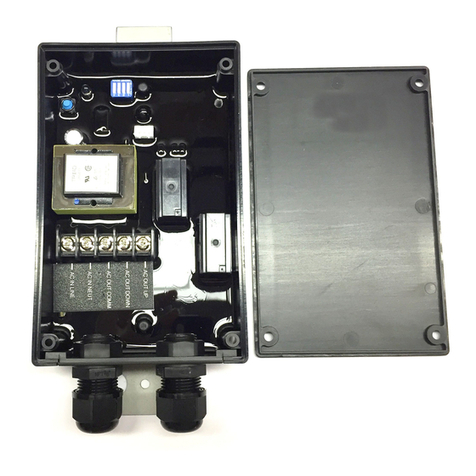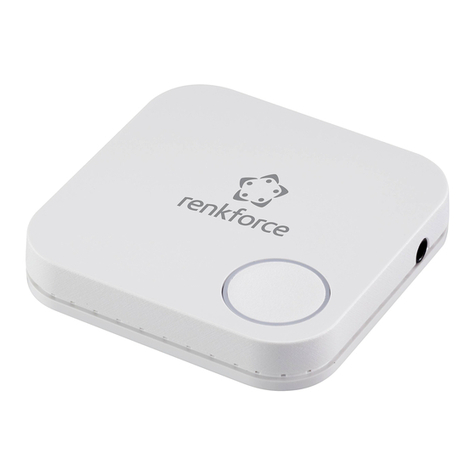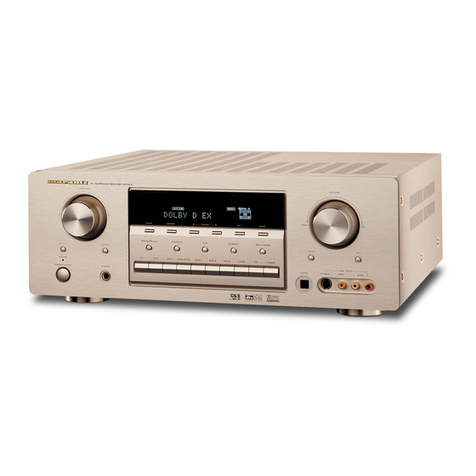Ericsson LBI-38310A User manual

Maintenance Manual
900 MHz
CONVENTIONAL STATION
RECEIVER
ericssonz
Ericsson Inc.
Private Radio Systems
Mountain View Road
Lynchburg, Virginia
1-800-528-7711 (Outside USA, 804-528-7711)
LBI-38310A
Printed in U.S.A.

DESCRIPTION
900 MHz station receivers are double conversion, superhet-
erodyne,single frequency FM receivers for operation in conven-
tional repeater systems. The receiver utilizes monolithic crystal
filters between the IF gain stages to provide the selectivity and
intermodulationrequiredtomeetorexceedallEIAspecifications
for conventional 900 MHz receivers.
The receiver consists of the receiver board and audio board,
with audio and control functions as well as supply voltages
applied through the system board.
Receiver 1st local oscillator (LO) injection is generated on
the exciter board.
CIRCUIT ANALYSIS
RECEIVER BOARD
The receiver board consists of the RF amplifier, mixer and
1st IF, 2nd IF and audio stages, and a synthesizer circuit. The
receiver board uses a combination of crystal and ceramic band-
pass filters for good intermodulation and desensitization charac-
teristics. A Block Diagram of the receiver board is shown in
Figure 1.
RF Front End
RF signal input from the antenna is applied to the receiver
board through J1. The 896-901 MHz input is coupled through
broadband ceramic filter FL1 to RF amplifier, U1. Amplifier U1
provides a gain of approximately 23 dB. The amplifier output is
coupled through two broadband ceramic filters (FL2 and FL3)
and applied to Mixer U2. Themixer is a high level passive switch
with a loss of approximately 6.5 dB.
First Mixer And IF
The local oscillator (LO) injection for the mixer is generated
by the receiver synthesizer located on the exciter. The 826-831
MHz LO signal from the exciter is applied to the receiver board
at J4, where it is amplified to approximately 100 milliwatts by
RF Amp U3, filtered by FL4, and applied to the 1st mixer.
The 70 MHz mixer output is amplified by Q6 and IF Ampli-
fier U4. Two 70 MHz crystal filters, FL5 and FL6, provide the
1st IF filtering.
Synthesizer
A synthesizer circuit located on the receiver board provides
the 2nd LO frequency of 70.450 MHZ. The synthesizer consists
of counter U9, phase detector U10, DC amp U11, VCO FETQ3,
RF buffer amplifiers Q1, Q2 and Q4.
The high stability 17.6125 MHz reference frequency from
the master oscillator is applied to the receiver board at J2. This
reference frequency is buffered by Q1, and applied to phase
detector U10.
Copyright © May 1989, General Electric Company
TABLE OF CONTENTS
Page
DESCRIPTION . . . . . . . . . . . . . . . . . . . . . . . . . . . . . . . . . . . . . . . . . . . . . . . 1
CIRCUIT ANALYSIS . . . . . . . . . . . . . . . . . . . . . . . . . . . . . . . . . . . . . . . . . . . 1
RECEIVER BOARD . . . . . . . . . . . . . . . . . . . . . . . . . . . . . . . . . . . . . . . . . 1
SPECIFICATIONS . . . . . . . . . . . . . . . . . . . . . . . . . . . . . . . . . . . . . . . . . . . . . 1
AUDIO BOARD . . . . . . . . . . . . . . . . . . . . . . . . . . . . . . . . . . . . . . . . . . . . 2
MAINTENANCE . . . . . . . . . . . . . . . . . . . . . . . . . . . . . . . . . . . . . . . . . . . . . 3
ADJUSTMENT PROCEDURE . . . . . . . . . . . . . . . . . . . . . . . . . . . . . . . . . . . . . . 5
OUTLINE DIAGRAMS
AUDIO BOARD . . . . . . . . . . . . . . . . . . . . . . . . . . . . . . . . . . . . . . . . . . . . 6
RECEIVER BOARD . . . . . . . . . . . . . . . . . . . . . . . . . . . . . . . . . . . . . . . . . 8
SCHEMATIC DIAGRAMS
RECEIVER BOARD . . . . . . . . . . . . . . . . . . . . . . . . . . . . . . . . . . . . . . . . . 7
AUDIO BOARD . . . . . . . . . . . . . . . . . . . . . . . . . . . . . . . . . . . . . . . . . . . . 9
PARTS LIST . . . . . . . . . . . . . . . . . . . . . . . . . . . . . . . . . . . . . . . . . . . . . . . . 10
SPECIFICATIONS*
Frequency Range 896.0125 - 900.9875
Audio Output 2 Watts at 8 Ohms 1 Vrms @ 1.5 kHz Deviation with 1 kHz modulation
Audio PA
Vol/Squelch Hi
Selectivity 75 dB adjacent channel
Intermodulation -90 dB minimum
12 dB SINAD -120 dBm typical
Distortion 2 watts
Frequency Stability Less than 5%
AM Rejection -26 dB minimum
Hum and Noise -45 dB
* These specifications are intended primarily for use by service personnel. refer to the appropriate Specification Sheet
for complete specifications.
This manual covers Ericsson and General Electric products manufactured and sold by Ericsson Inc.
NOTE
Repairs to this equipment should be made only by an authorized service technician or facility designated by the supplier.
Any repairs, alterations or substitution of recommended parts made by the user to this equipment not approved by the
manufacturer could void the user’s authority to operate the equipment in addition to the manufacturer’s warranty.
NOTICE
This manual is published by Ericsson Inc., without any warranty. Improvements and changes to this manual necessitated by
typographical errors, inaccuracies of current information, or improvements to programs and/or equipment, may be made byEricsson
Inc., at any time and without notice. Such changes will be incorporated into new editions of this manual. No part of this manual may
be reproduced or transmitted in any form or by any means, electronic or mechanical, including photocopying and recording, for any
purpose, without the express written permission of Ericsson Inc.
LBI-38310
1

VCO Q3 operates at 70.450 MHz. The circuit is tuned by
L11. The output of the VCO is coupled through buffer amp Q4
andRFampQ2,andappliedtothedivide-by-fourcounter,U9.
The counter output is applied to phase detector U10, whose
output is applied to DC amplifier, U11. Feedback for the loop
control voltage is developed across R7.
The 70.450 MHz output is coupled through C40 from the
collector of Q4 to pin 4 of audio IC, U6, , where it is mixed
with the 70 MHz 1st IF input to derive the 450 kHz 2nd IF.
Second Mixer, IF & Audio
Integrated circuit (IC) U6 contains the 2nd mixer, 2nd IF
amplifier and mixer stages, the audio detector and audio am-
plifiers.
The 70 MHz 1st IF output of FL6 is applied to U6-1. The
70.450 MHz2nd LO signal is applied to the 2nd mixer at U6-4
to derive the 450 kHz 2nd IF signal. The 450 kHz IF is filtered
by ceramic filters FL7 and FL8. The audio component of the
2ndIFisdemodulatedbythequadraturedetectorcircuitin U6.
Network Z1 provides the required 90°phase shift of the 450
kHz signal. The de-modulated audio from U6-8 is coupled
through buffer Q5 and applied to audio output jack J3-3.
RSSI Voltage
The Received Signal Sensitivity Indication (RSSI)is a DC
level that is proportional to the receiver RF input signal level
to the receiver. This voltage can be measured at J3-4.
Refer to the Schematic Diagram and Adjustment Proce-
dure voltage readings.
Supply Voltage
The receiver is supplied by a regulated 10 volts from the
system board. However, other circuits are supplied by voltage
regulators U5, U7 and U8 for stability and isolation.
Regulated 10 volts from the system board is used to supply
RFamplifierU1,IFampU4,VCOtransistorQ3,andRFbuffer
Q4. Regulator U5 provides the 5-volt supply for audio IC U6.
5-volt regulator U7 supplies counter U9, Phase detector U10,
and RF amps Q1 and Q2. The 8-volt regulator (U8) provides
power for RF amp U3 and audio buffer Q5.
AUDIO BOARD
The audio board consists of a preamplifier circuit, squelch
detector, and audio PA circuit. The audio board is connected
to the system board through P904. The discriminatoroutput is
applied through J602 on the audio board. Power is supplied
from a regulated 10 volts from the system board at P904-14.
The audio power amplifier is supplied by 13 Volts at P904-15.
A block diagram of the audio board is shown in Figure 2.
Audio Preamplifier
Discriminatoraudiofrom J602-3 iscoupledthroughAudio
Level Adjust R608 to the preamplifier circuit. The preamp
consists of Q601, Q602, Q603 and associated circuitry, and
provides 26 dB of gain. The amplified output is connected to
the squelch and audio PA IC through the arm of the VOL and
SQ controls on the exciter-receiver door assembly.
Receiver Audio
The audio circuitry consists of a three-stage, quad inte-
grated circuit (U602-A, U602-C and U602-D). The three
stagesprovideastandardEIA ChannelGuardtonerejectfilter,
a receiver de-emphasis circuit, and the low level audio driver
circuitry.
Audio fromthepre-amplifiercircuitis coupled throughthe
VOLUME control to VOLUME arm (P904-13). The audio at
P904-13 is applied to CG tone reject filter U602-C, U602-D
and associated circuitry to remove any low frequency signal.
The filter output is then applied to a 6-dB per octave de-em-
phasis/audio driver circuit (U602-A). The audio driver output
is AC-coupled to the Class AB audio PA integrated circuit,
U604-1.
The PA output is coupled through C633 to provide rated
powertothe8-ohmspeaker.FeedbackfromU604-3iscoupled
through R652 and C630 to determine the gain of the audio
power amplifier. Capacitor C634 is connected across the out-
put to protect U604 from a "no load" or open circuit condition.
Receiver Squelch
Audio Switches
U606 is a dual section, audio switching IC that acts as two
form "C" (N.O.- N.C.) contacts. The switch states are control-
led by the inputs at U606A-10 and U606B-11. Both of the
inputs are activated by the receiver SQ DISABLE function.
When the receiver is squelched, pin 11 of U606-A is near
A-. This turns off the entire audio circuit to eliminate noise.
Pin 1 of U606-B is connected to the system board through
P904-7 (RX MUTE). This allows the receiver audio to be
disabled by the Channel Guard option when used.
Figure 1 - Receiver Board Block Diagram
LBI-38310
2

Pin 2 of U606-10 is connected to the system boardthrough
P904-6 (SQ DISABLE) so that the receiver audio stages can
be activated for an alert tone output whenever the Carrier
Controlled Timer or other options are used.
Squelch ICs
The receiver squelch circuit consists of noise amplifier
U602B, active noise filter U601C and U601D, noise rectifier
U601B, DC amp U601A, and level detector U603D. In addi-
tion, the squelch circuit contains the Receiver Unsquelched
Sensor (RUS) switch U603B, Carrier Activity Sensor (CAS)
switch U603A, and the RX MUTE switch U603C. The RX
MUTE switch controls the audio path to audio IC U604
through U606.
Noise Amp, Filter & Level Detector
Noise from the limiter/detector at P904-10 is coupled to
the noise amplifier U602B through the SQUELCH control,
andthenappliedtothe activenoisefilter(U601CandU601D).
The active filter provides the gain and selectivity necessary to
distinguish between noise and audio. The filter output at
U601D-14 drives the level detector circuit to provide the
squelch switching functions. Potentiometer R622 adjusts the
noise level for the proper squelch operation.
SQUELCH SWITCHES
Level detector U603D controls two of the switched
squelch outputs. The first output controls the RX MUTE
switch (U603C), and the second output controls the CAS
switch (U603A). The RUS switch (U603B) is also controlled
by the RX MUTE signal.
The squelch input to the level detector is at U603D-10.
U603D-11isreferencedto4VoltsfromvoltagedividerR640and
R641. When the receiver is squelched, the input at U603D-10 is
near 3 Volts, and the output at pin 13 is approximately 10 Volts.
This keeps the output of receiver audio stages turned off, muting
the audio. The level detector output is connected to its input
through R639, providing a hysteresis loop in the squelch circuit
to prevent squelch closing on weak signals.
When the receiver is quieted by an on-frequency signal
(receiver unsquelches),thevoltageatU603D-10risesto approxi-
mately 5 Volts DC, and the output at pin 14 drops to near 0 volts.
This turns on the audio stages and sound is heard at the speaker.
RUS Switch (Receiver Unsquelched Sensor)
When the receiver is unsquelched, the output of the level
detector(U603D-13)goeslow.ThelowturnsoffU603C,causing
U603B-1 to go high (approximately 10 Vdc), turning on RUS
switch U603B. The RUS output at U603B-1 is also connected
to the system board through P904-8 for use in special applica-
tions.
CAS Switch (Carrier Activity Sensor)
Leveldetector U603Dalso drivesCAS switch U603A.When
the receiver unsquelches, the voltage at U603A-2 rises to ap-
proximately 10 volts. This voltage is connected to the system
board through P904-9 where it is used to activated such options
as the Channel Busy light, Carrier Control Timer, and Carrier
Operated Relay.
MAINTENANCE
SERVICING
To gain access to the receiver for servicing:
To service the receiver from the top:
1. Turn the two latching knobs shown in Figure 3 counter-
clockwise to unlatch the exciter/receiver door.
2. Swing the exciter/receiver door housing down as shown
in Figure 4 and remove the top cover (exciter/receiver
door shown with cover removed).
To service the receiver from the bottom:
1. Turn the two latching knobs shown in Figure 3 counter-
clockwise to unlatch the exciter/receiver door housing
and swing the housing down as shown.
2. Remove the top cover. Then, grasp the receiver handle
shown in Figure 4 and swing the housingup for accessto
the bottom of the receiver.
ADJUSTMENTS
The 900 MHz conventional receiver has no adjustments for
"peaking" up receiver performance. If some adjustment is re-
quired as a result of component replacement or other mainte-
nance, refer to the Adjustment Procedure contained in this Main-
tenance Manual.
TROUBLESHOOTING
Both the Schematic and Outline diagrams contain trou-
bleshooting information to assist in servicing the receiver. This
service information includes voltage and gain readings, power
levels and signal flowinformation.Referto these diagramswhen
troubleshooting the receiver (see Table of Contents).
Disconnect the two RF cables connecting the re-
ceiver and exciter, and remove the cable retaining
screw before raising the receiver housing as di-
rected in Step 2.
CAUTION
Figure 2 - Audio Board Block Diagram
LBI-38310
3

Figure 3 - Latching Knobs Securing Door Figure 4 - Access To Receiver
LBI-38310
4

ADJUSTMENT PROCEDURE
ADJUSTMENT PROCEDURE
(19D902181, Sh. 1, Rev. 0)
ADJUSTMENT PROCEDURE
The conventional receiver has no field adjustments for peak-
ing up performance. However, should it become necessary to
replace components at the customer location, the following
adjustments may be required.
Calibration of the 70.45 MHz 2nd L.O. (L11):
1. Remove the top cover of the receiver, and then discon-
nect the 17.6125 MHz reference signal from J2.
2. Measure for 70.45 MHz ±50 kHz at J5. If necessary,
carefully adjust L11 to obtain 70.45 MHz ±50 kHz (see
CAUTION below).
RF INPUT RSSI
-40 dBm 4.5 Vdc
-60 dBm 4.5 Vdc
-80 dBm 4.0 Vdc
-100 dBm 3.3 Vdc
-120 dBm 2.3 Vdc
Typical RF Levels vs. RSSI Voltages
Receiver Board
Calibration Of Quadrature Detector Z1:
1. Remove the receiver top cover. Then apply a modulated
RF signal to antenna jack J1.
2. Adjust the RF generator for -50 dBm with 1 kHz tone
at 1.5 kHz modulation.
3. Adjust Z1 for maximum audio at J3-3 (200 mV rms
minimum).
4. Fine tune Z1 for symmetrical eye pattern at J3-3 with
input signal modulated with 9600 b/s data at 1.8 kHz
peak deviation.
AUDIO BOARD
System Audio Level Adjust (R608):
1. Apply a -50 dBm RF signal with 1 kHz tone at 1.5 kHz
deviation at the receiver input.
2. Adjust R608 for a reading of 1 volt RMS at P904-11
(Volume-Squelch High).
Squelch (Noise) Calibration:
1. Turn the SQUELCH control on the exciter-receiver door
fully clockwise. Then turn the control counterclockwise
approximately one third of the way.
2. Adjust R622 until the voltage reading at P904-7 (RX
MUTE) just drops to near zero volts. Then readjust the
SQUELCH control for critical squelch.
The tuning slug in L11 is very fragile.Do NOT use
ahardmaterialtuning tool such asmetalor ceramic
to tune the coil. If it should become necessary to
tune the L11, it is suggested that a tuning tool be
constructed out of around toothpick (or equivalent
plastic tool) that has one end fashioned into a flat
tuning edge.
CAUTION
LBI-38310
5

RECEIVER BOARD
OUTLINE DIAGRAM
(19D902083, Sh. 3, Rev. 2)
TOP VIEW
(19D902083, Sh. 4, Rev. 2)
BOTTOM VIEW
LBI-38310
6

SCHEMATIC DIAGRAM
RECEIVER BOARD
19D902083G1
(19D902107, Rev. 5)
LBI-38310
7

AUDIO BOARD
19D902181G1
OUTLINE DIAGRAM
(19D902181, Sh. 1, Rev. 0)
(19D902182, Sh. 1&2, Rev. 3)
LBI-38310
8

AUDIO BOARD
19D902181G1
SCHEMATIC DIAGRAM
(19D902183, Rev. 1)
LBI-38310
9

PARTS LIST
LBI-38310
10

PARTS LIST LBI-38310
11
Other Ericsson Receiver manuals
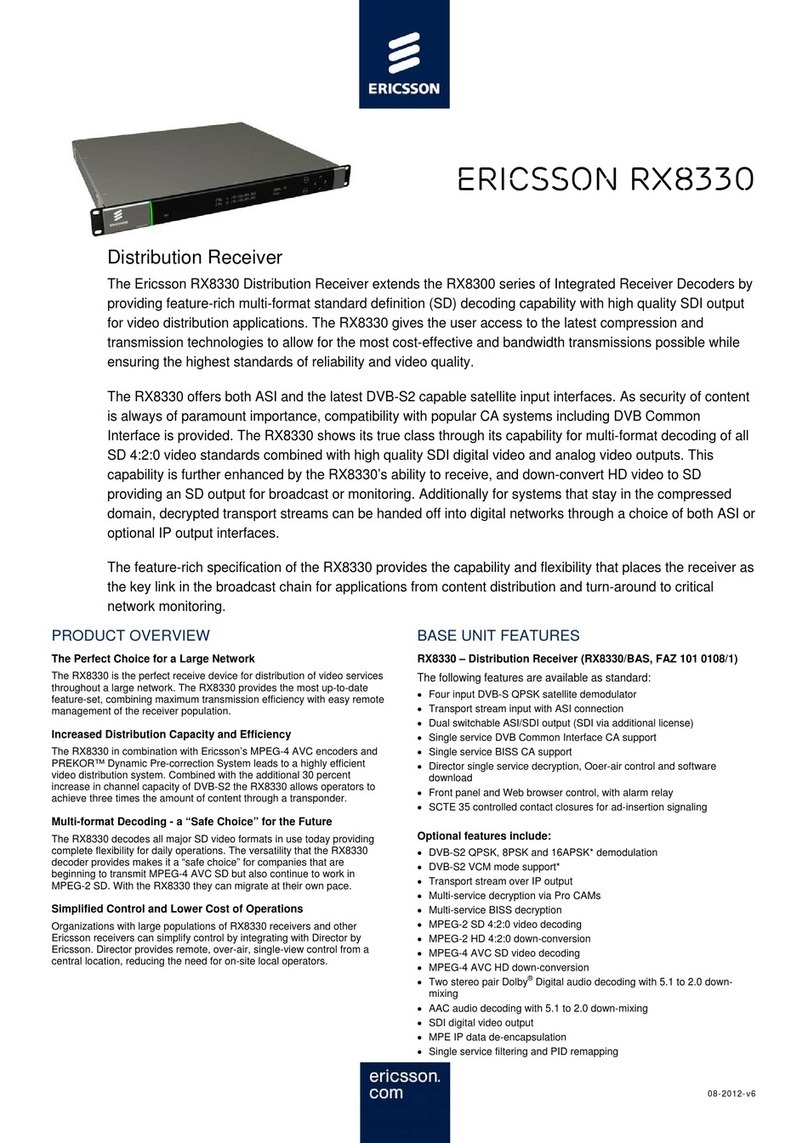
Ericsson
Ericsson RX8330 User manual
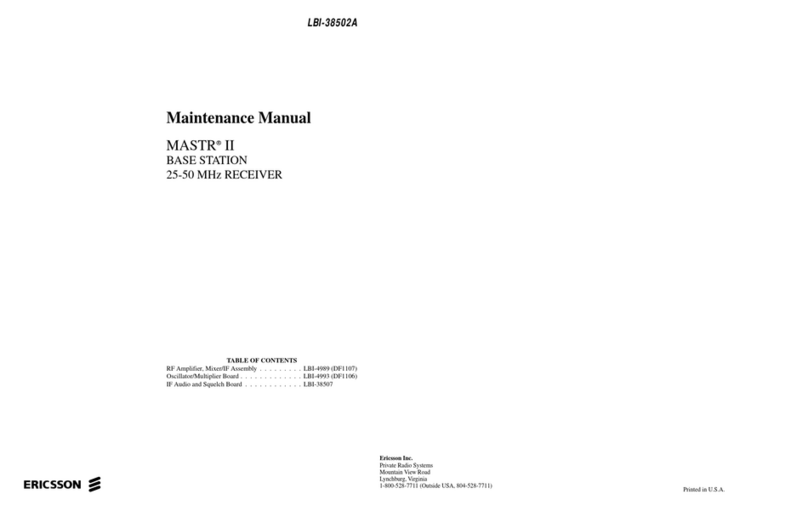
Ericsson
Ericsson MASTR II User manual
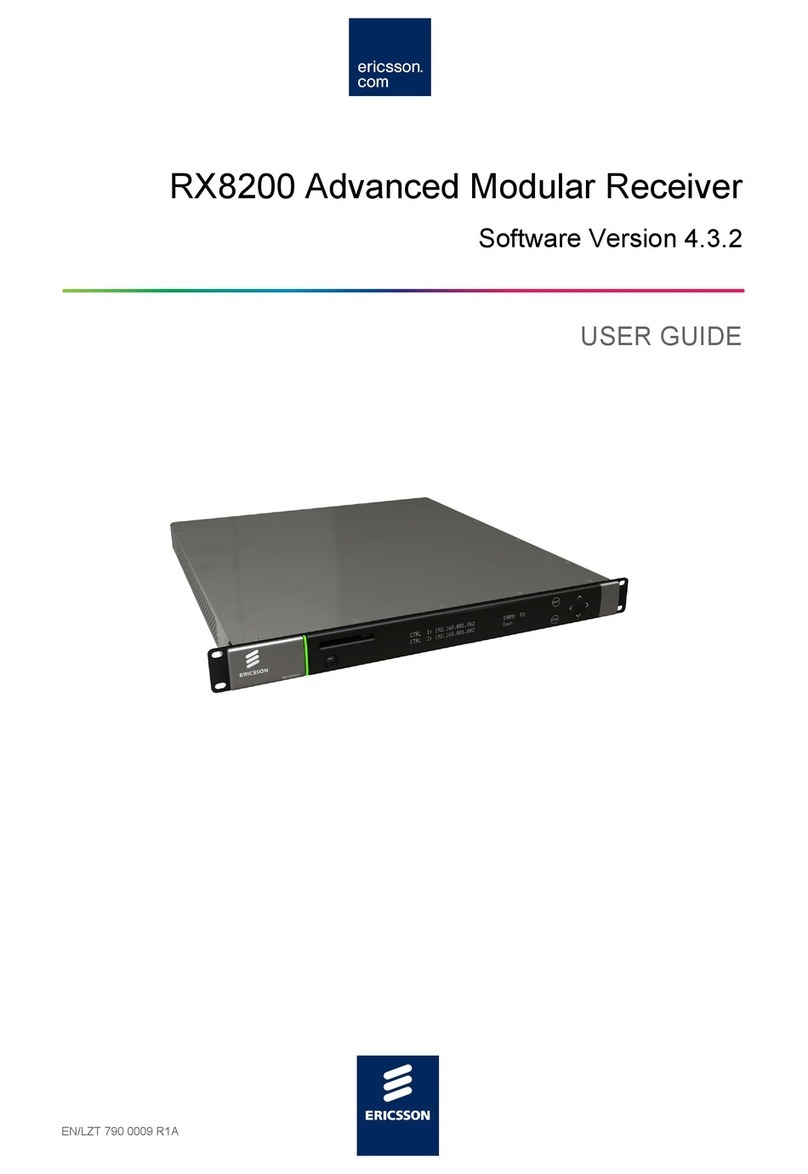
Ericsson
Ericsson RX8200 User manual
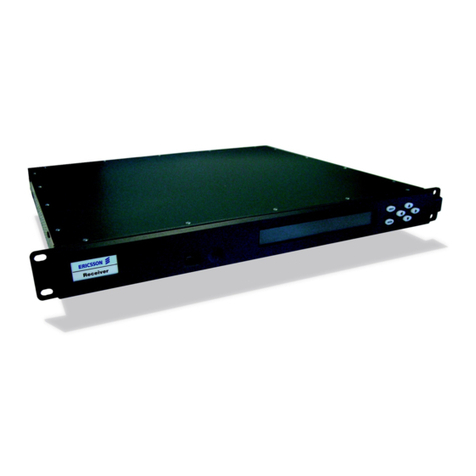
Ericsson
Ericsson RX8 Series User manual
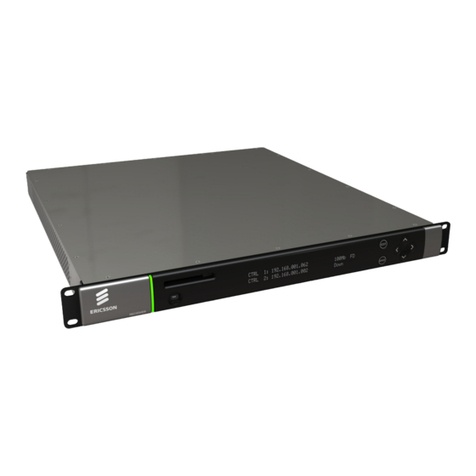
Ericsson
Ericsson RX8000 Series User manual
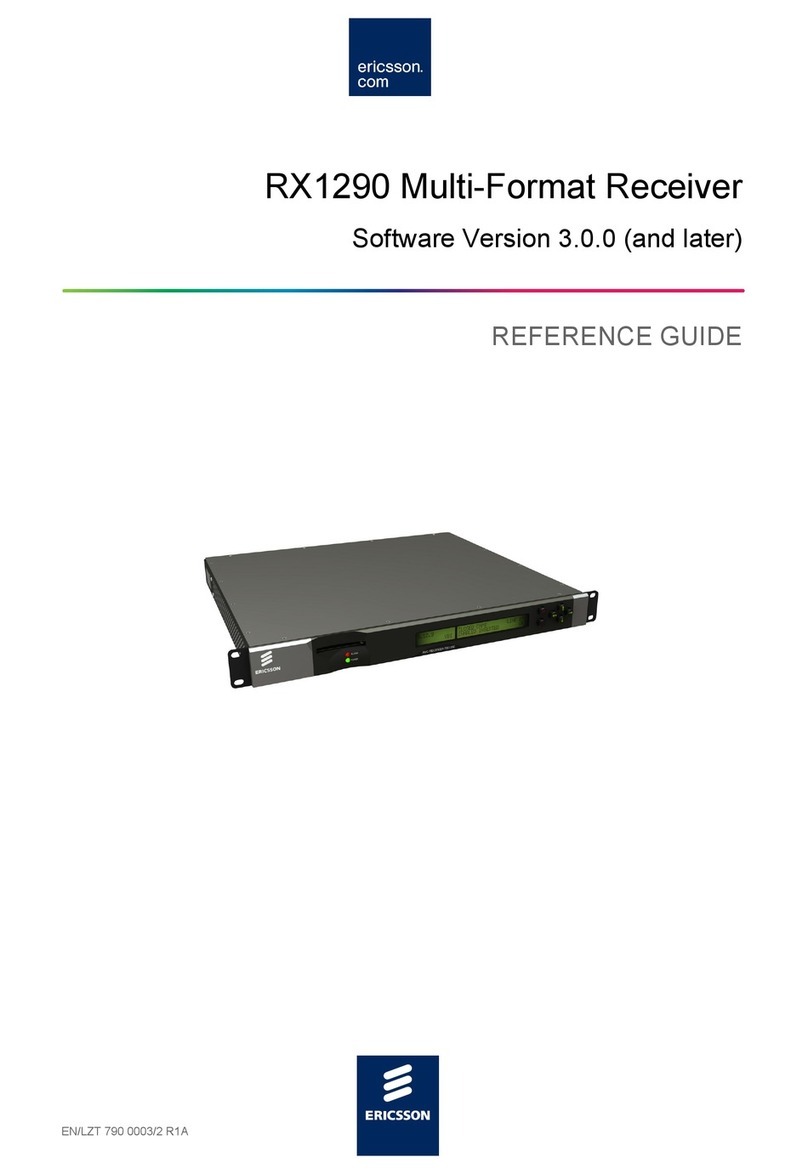
Ericsson
Ericsson RX1290 User manual
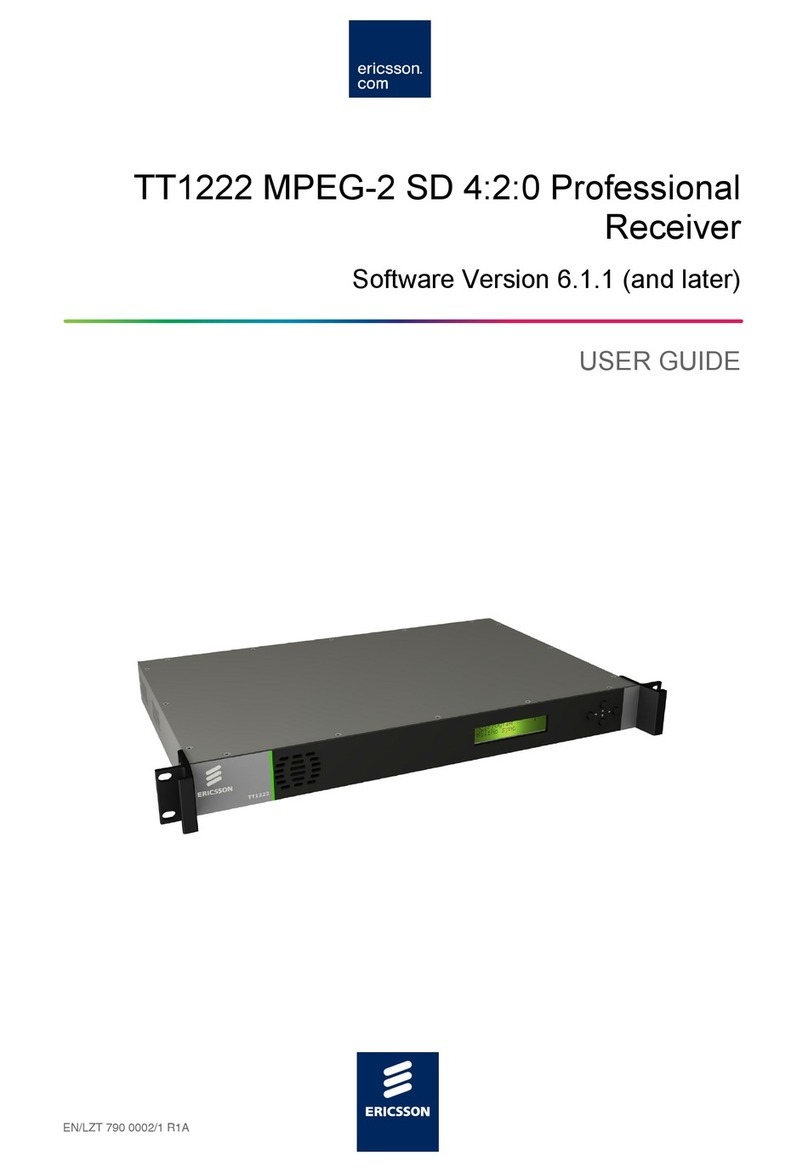
Ericsson
Ericsson TT1222 MPEG-2 SD 4:2:0 User manual
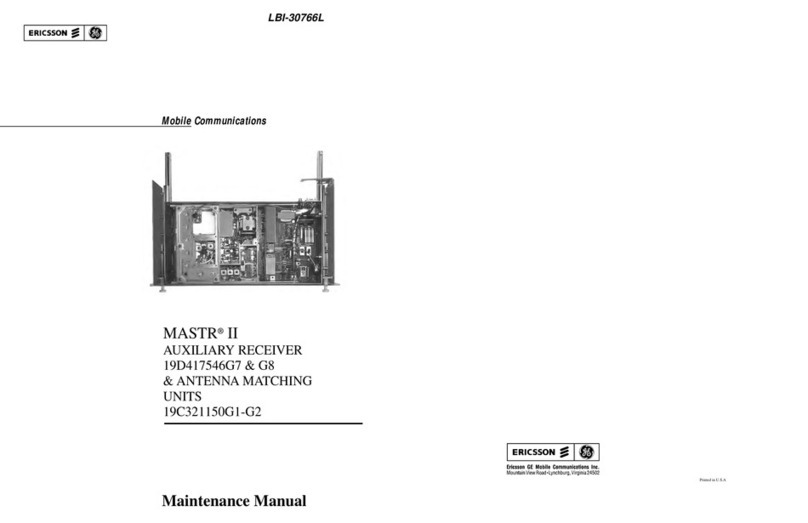
Ericsson
Ericsson MASTR II User manual

Ericsson
Ericsson 19D902783G1 User manual
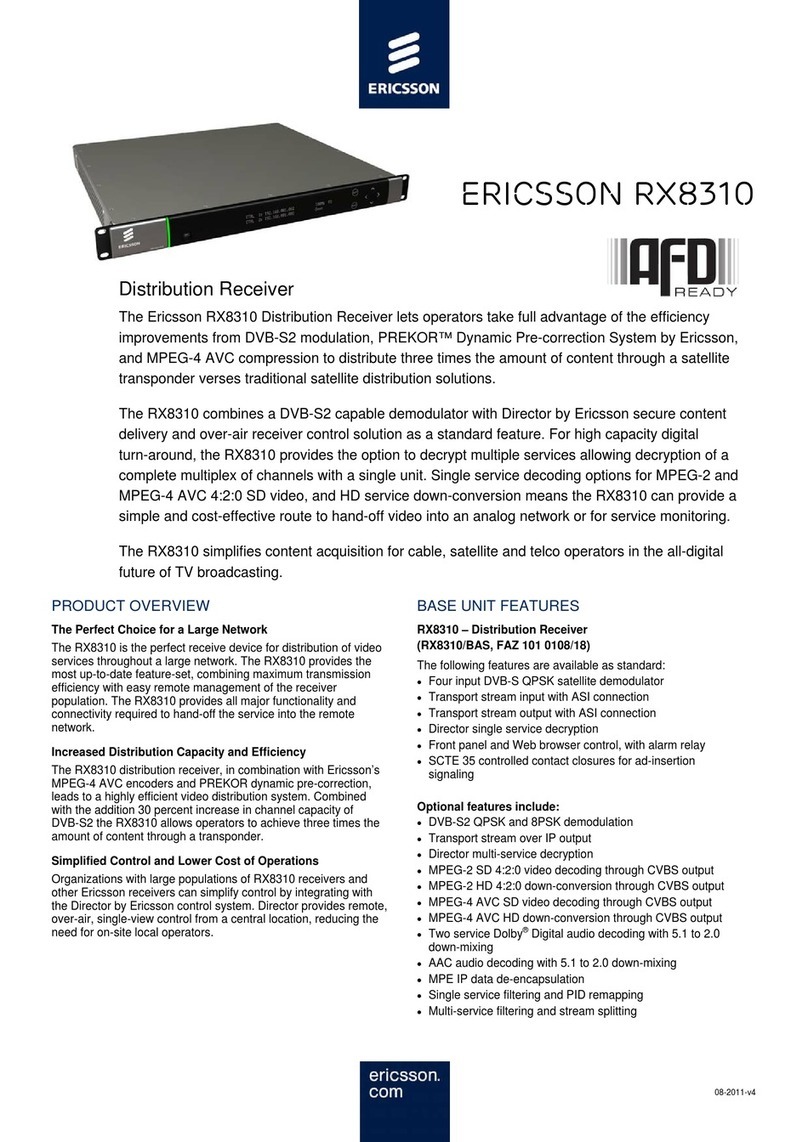
Ericsson
Ericsson RX8310 User manual
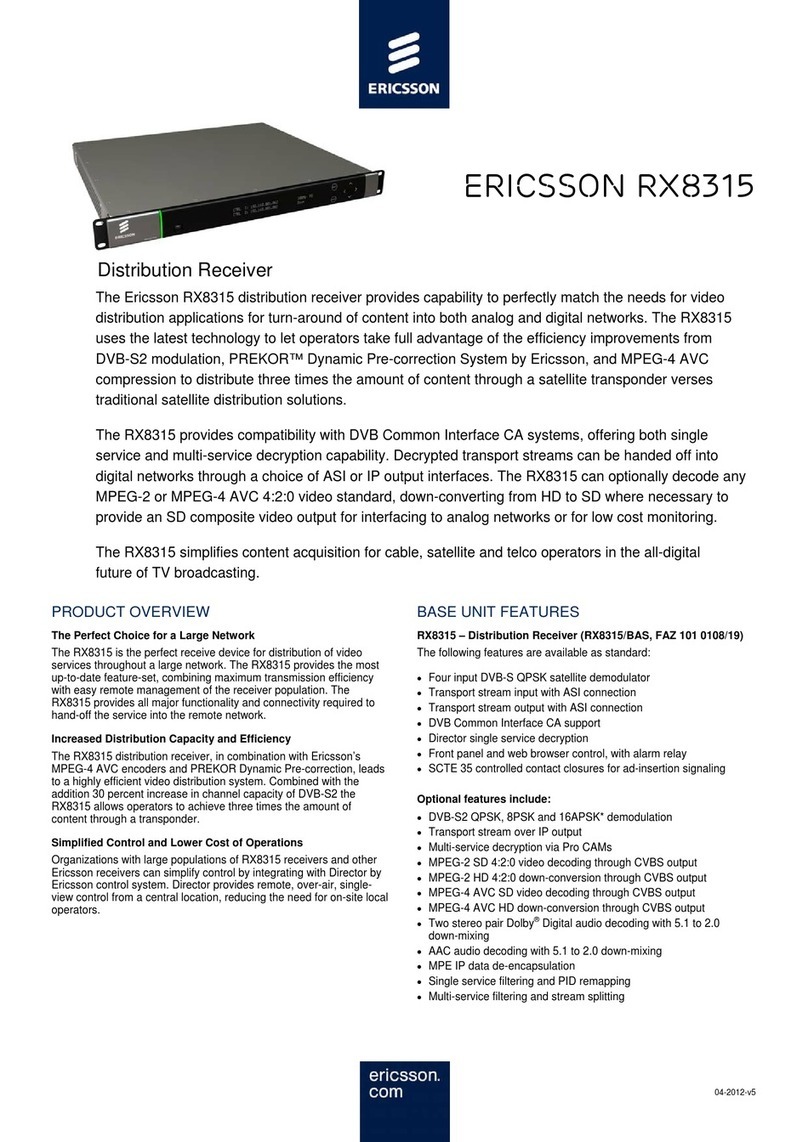
Ericsson
Ericsson RX8315 User manual

Ericsson
Ericsson LBI-38505A User manual

Ericsson
Ericsson MASTR II User manual

Ericsson
Ericsson RX8310 User manual

Ericsson
Ericsson MINI-LINK AMM 1U-1 User manual
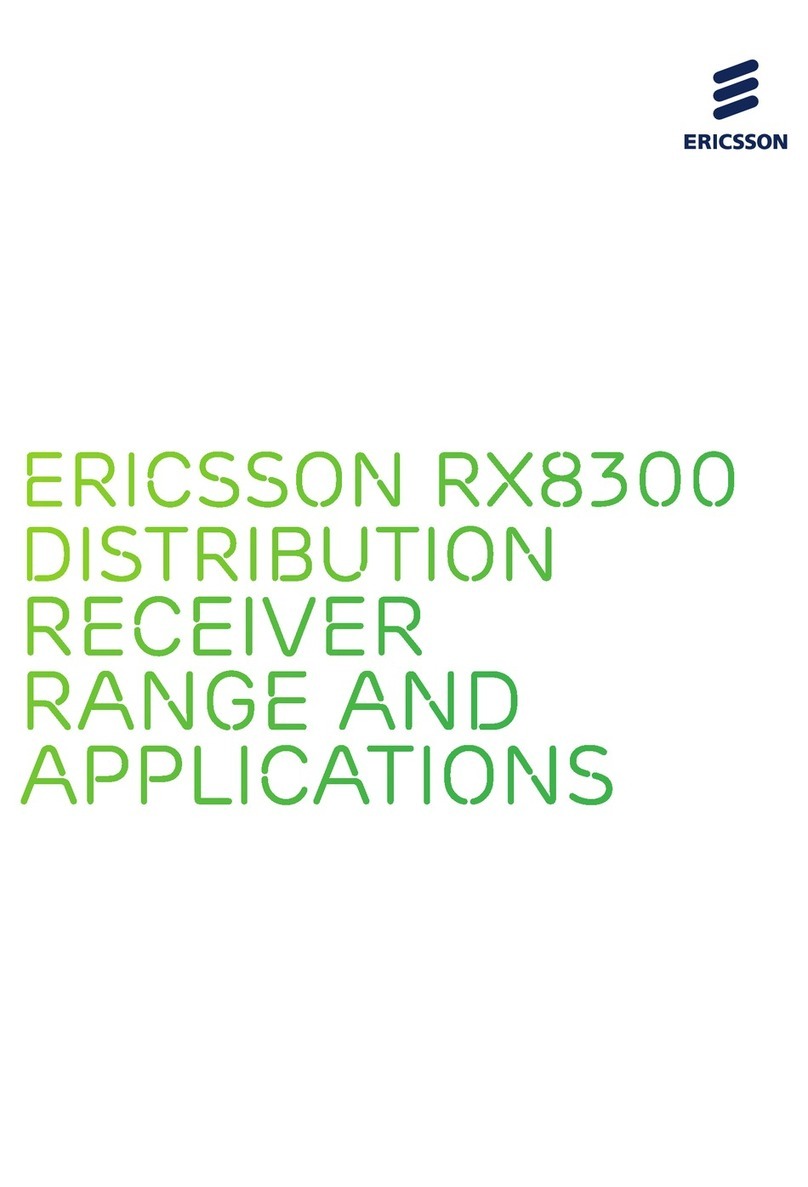
Ericsson
Ericsson RX8300 User manual
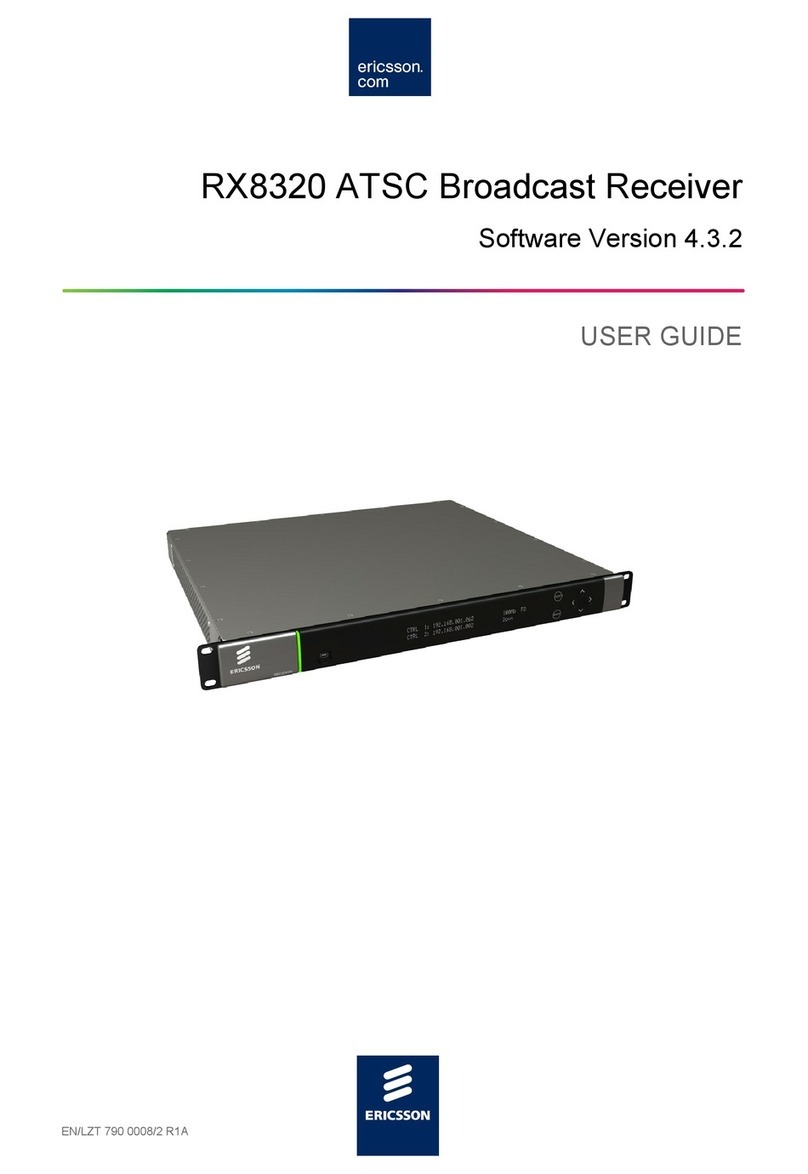
Ericsson
Ericsson RX8320 User manual
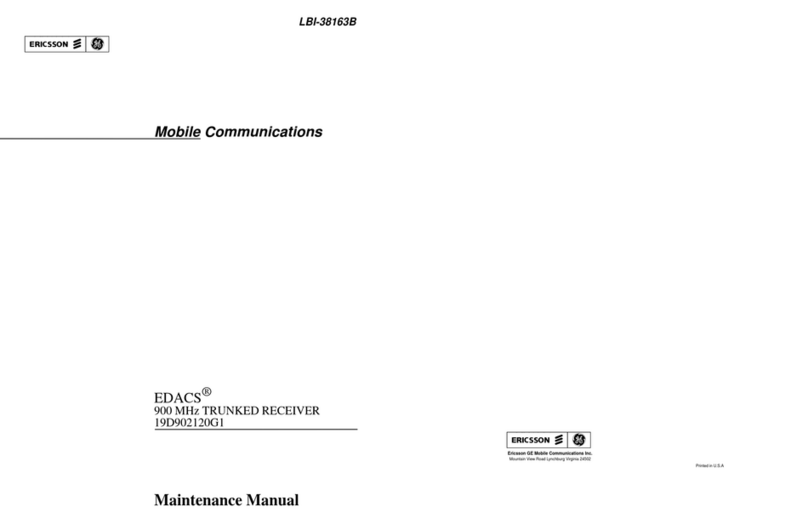
Ericsson
Ericsson EDACS 19D902120G1 User manual

